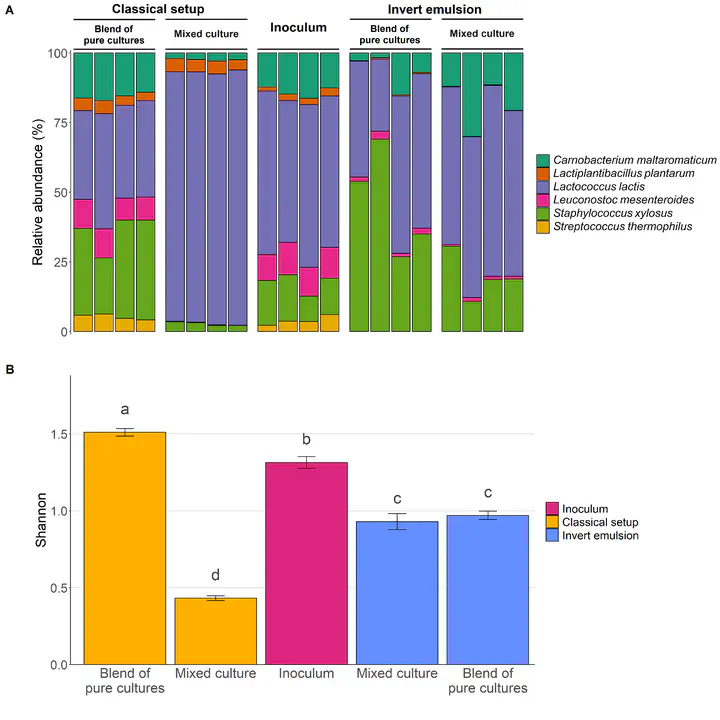
Abstract
The large application potential of microbiomes has led to a great need for mixed culture methods. However, microbial interactions can compromise the maintenance of biodiversity during cultivation in a reactor. In particular, competition among species can lead to a strong disequilibrium in favor of the fittest microorganism. In this study, an invert emulsion system was designed by dispersing culture medium in a mixture of sunflower oil and the surfactant PGPR. Confocal laser scanning microscopy revealed that this system allowed to segregate microorganisms in independent droplets. Granulomorphometric analysis showed that the invert emulsion remains stable during at least 24 h, and that the introduction of bacteria did not have a significant impact on the structure of the invert emulsion. A two-strain antagonistic model demonstrated that this invert emulsion system allows the propagation of two strains without the exclusion of the less-fit bacterium. The monitoring of single-strain cultures of bacteria representative of a cheese microbiota revealed that all but Brevibacterium linens were able to grow. A consortium consisting of Lactococcus lactis subsp. lactis biovar diacetylactis, Streptococcus thermophilus, Leuconostoc mesenteroides, Staphylococcus xylosus, Lactiplantibacillus plantarum and Carnobacterium maltaromaticum was successfully cultivated without detectable biotic interactions. Metabarcoding analysis revealed that the system allowed a better maintenance of alpha diversity and produced a propagated bacterial consortium characterized by a structure closer to the initial state compared to non-emulsified medium. This culture system could be an important tool in the field of microbial community engineering.